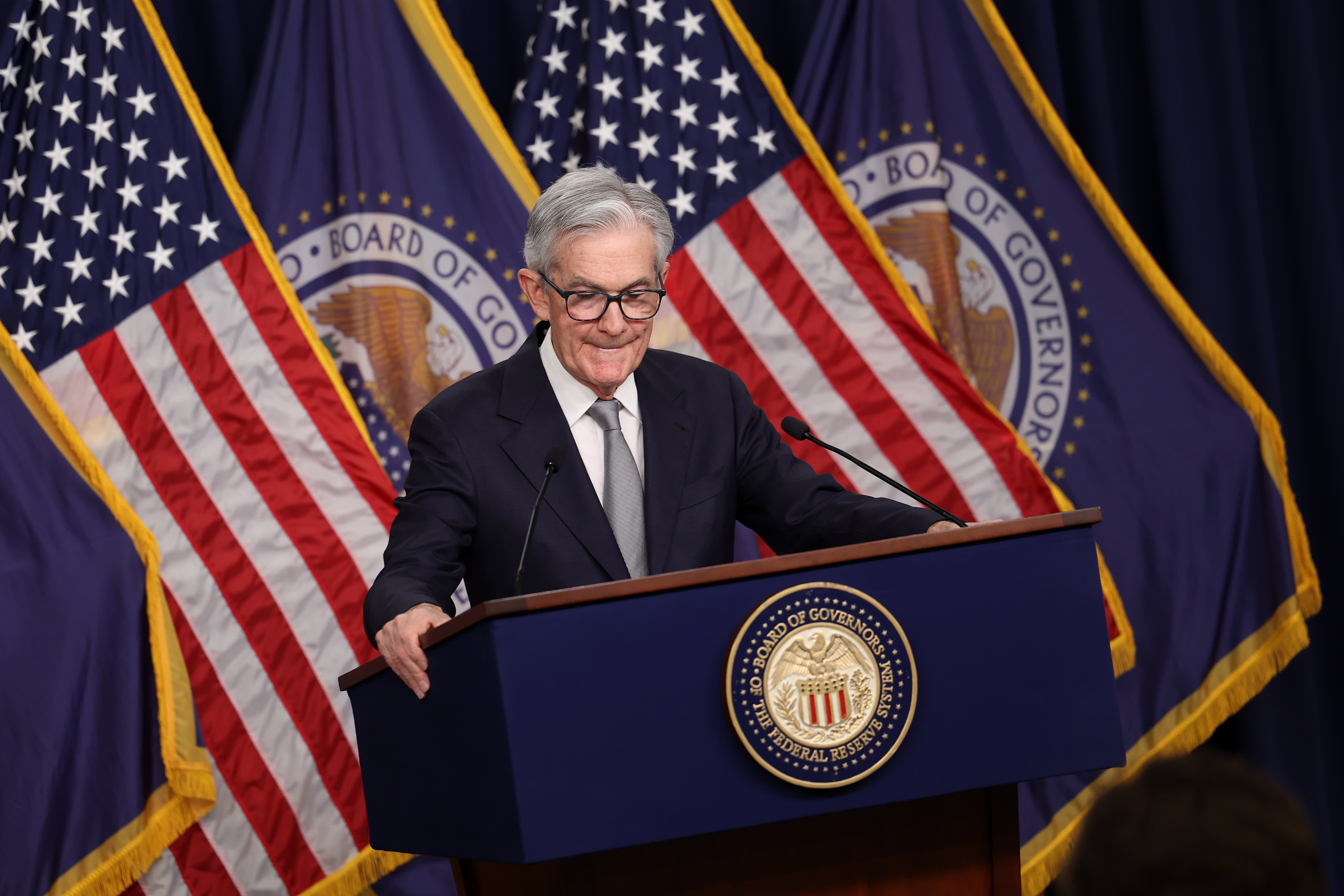
Federal Reserve Board Chairman Jerome Powell speaks during a news conference after a Federal Open Market Committee meeting on November 01, 2023 at the Federal Reserve in Washington, DC.
Kevin Dietsch | Getty Images News | Getty Images
Signs of the hoped-for soft landing are emerging, but we are about to see whether the Federal Reserve is truly ready to end its hiking.
Interest rates jumped Friday on the November jobs number, which was slightly stronger than expected at 199,000 payrolls added, as well as the modest dip in the unemployment rate.
This implies that bond traders are worried, to a degree, that the Fed has more work to do to cool the economy and bring inflation all the way back to its stated target of 2%.
In other words, the market sees the risk of another rate hike rising, rather than falling. This has been the case for roughly the last month amid softening inflation and economic data.
The market’s initial knee-jerk reaction to data can sometimes be wrong, as algorithms “see” a number slightly off consensus and trigger a momentarily appropriate response.
What the machines, and perhaps the Fed, are overlooking include the downward revisions to the number of jobs created in August and September, as well as the composition of job gains reported for November.
In other words, the data reported on this Friday morning does not suggest the Fed needs another rate hike and most certainly does not suggest the economy is growing beyond its potential.
Policymakers are expected to give details on where they stand at the conclusion of the central bank’s two-day meeting on Dec. 13.
Returning workers
Nearly a quarter of the job gains were workers returning from strikes, while another quarter from government job additions. A large chunk of last month’s new payrolls came from hiring in the health-care sector, a corner of the economy that has been suffering from chronic underemployment for many years.
Add to the data underappreciated by the markets is the surge in worker productivity, which grew at an annual rate of 5.2% in its most recent report, coupled with a modest 1.6% gain in worker compensation.
The most closely watched measure of inflation, the core personal consumption expenditures, is annualizing at a 2.5% rate over the last six months. That’s just a touch above the Fed’s target. Meanwhile, energy prices are cratering in all forms.
A gradual cooling
What we still have is a Goldilocks economy that is now back to pre-pandemic form. We don’t know long it will last.
Without the Fed having to do a single thing more, the economy is cooling and settling into a sweet spot.
Corporate executives, ranging from Amazon to Walmart to Lululemon, are saying the consumer has turned cautious.
That should be apparent given the drawdown in excess savings, the build-up in credit card debt – now at a record $1.08 trillion – with delinquency rates rising both on consumer cards and in auto loans. Those delinquency rates are consistent with a potentially recessionary environment.
Of course, that’s not necessarily a good thing despite what some of the more hawkish economists would like to see as a means of killing off inflation once and for all.
A mild recession appears to be a more realistic risk in 2024, given those issues and the wall of commercial real estate and multi-family construction debt that needs to be refinanced next year.
That rising refinancing burden, which also includes U.S. government debt, could lead not just to delinquencies but also to defaults. In turn, this could result in some financial instability that forces the Fed to cut interest rates sometime in 2024.
It should also be noted that growth is also slowing from the torrid 5.2% annual rate reported in the third quarter.
The Atlanta Fed’s GDP Now model is now forecasting economic growth downshifting to a more sustainable, and less inflationary, 1.2% annual rate in the current quarter.
This is exactly where the Fed wanted the economy to be: slowing down, while inflation nears its target, productivity advances and wage rates cool.
At least right now, this is the central bank’s dream scenario, the mythical “soft landing.”
The Fed should openly embrace this moment, declare victory and depart the field.
—CNBC contributor Ron Insana is chief market strategist at Dynasty Financial Partners.

